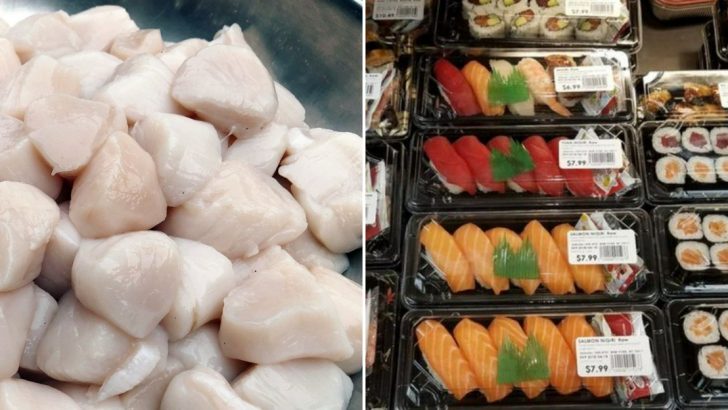I’ve always loved seafood, but as I’ve traveled and experimented in the kitchen, I’ve learned that not every dish that glitters is gold. Some seafood items are downright risky or just plain disappointing—even professional chefs steer clear of them.
Whether it’s due to questionable freshness, unsustainable sourcing, or downright bizarre preparation methods, here are 25 seafood dishes that even the pros won’t touch.
Prepare to be shocked, amused, and maybe a little wiser the next time you scan a menu!
1. Gas Station Sushi
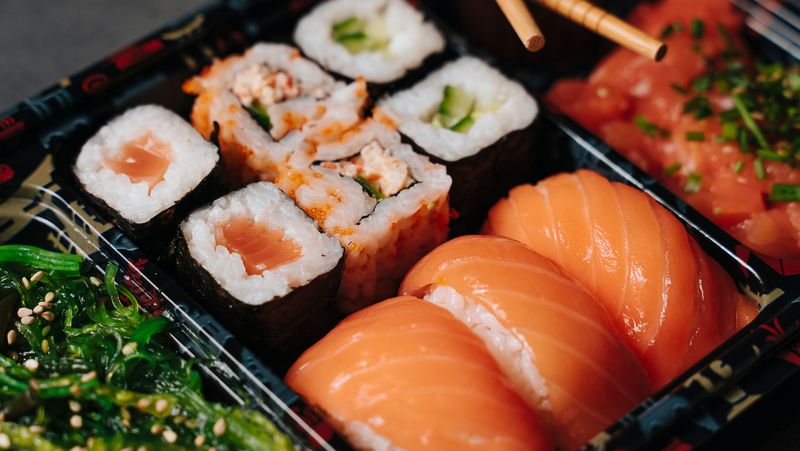
I remember my first encounter with gas station sushi—it looked like sushi, but the question was, “When was it made?” Often prepared under dubious conditions, this dish is a risky gamble for your stomach. Chefs warn that improper storage can lead to food poisoning, and frankly, it rarely tastes fresh.
Trust me, if you’re thinking of grabbing sushi on the go, steer clear of the gas station version. Instead, opt for a reputable spot where freshness is a guarantee, because raw fish deserves better than a mystery from a vending machine.
2. Pre-Packaged Supermarket Sushi
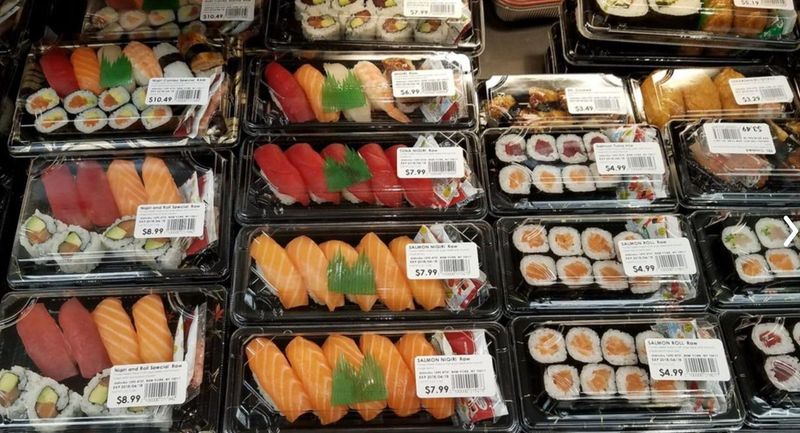
Pre-packaged sushi might seem convenient, but it often suffers from mushy rice and rubbery fish due to being made hours or even days in advance. I once bit into what I hoped was a tasty roll only to be met with a texture that could rival a soggy sponge.
For a safer, more satisfying experience, seek out freshly made sushi from a dedicated counter or local sushi bar. Your palate—and your digestion—will thank you for bypassing the convenience trap.
3. Freshwater Sushi (Like Tilapia Or Catfish Rolls)
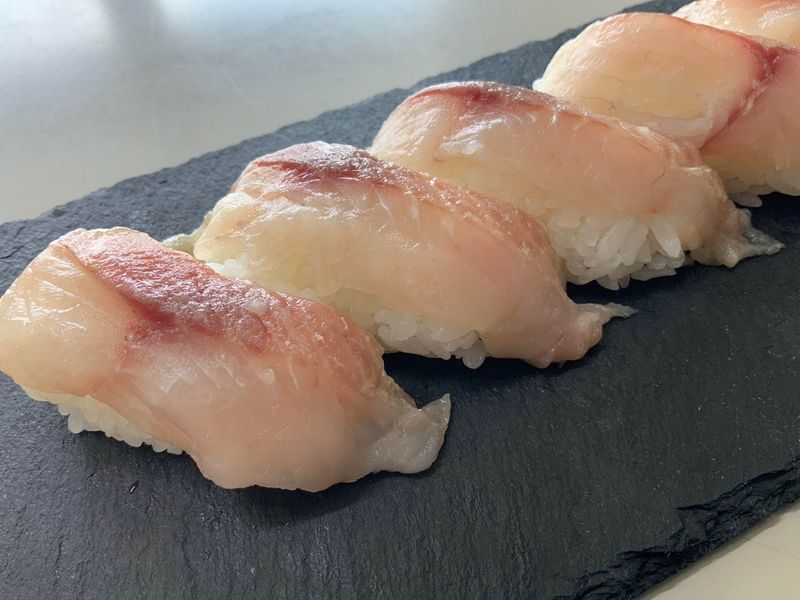
Freshwater fish in sushi rolls? It might sound innovative, but tilapia or catfish can harbor parasites that are not always neutralized by freezing. I once had a roll that left me feeling uneasy, and I later learned that freshwater varieties are rarely used in proper sushi preparation.
In the world of sushi, quality is everything. Wild-caught, saltwater fish like tuna and salmon deliver the flavor and safety you need. If you’re tempted by the novelty of freshwater sushi, remember: sometimes, tradition is there for a reason.
4. Raw Scallops from Unreliable Sources
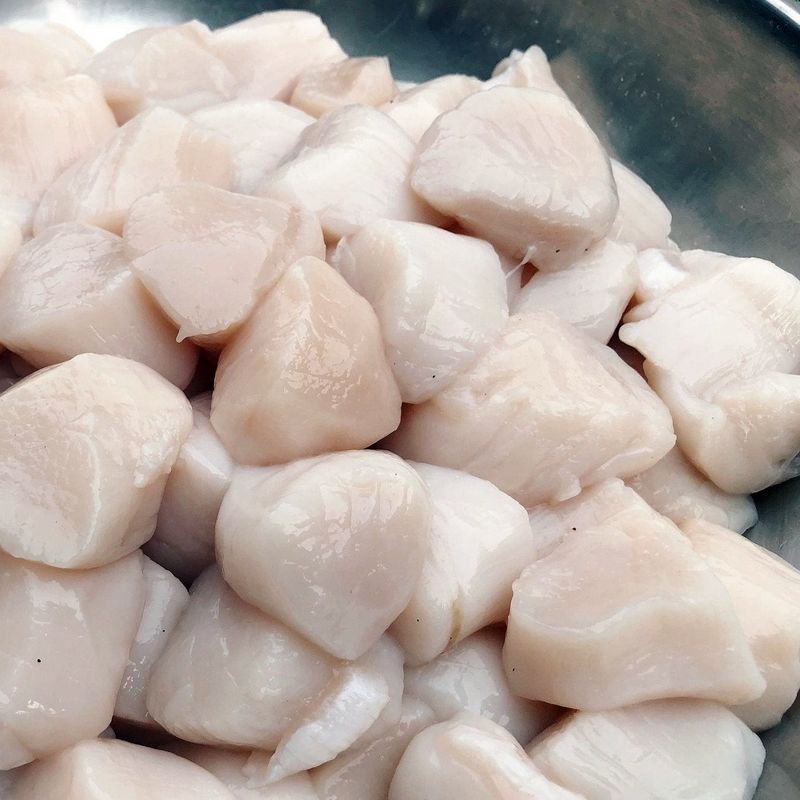
There’s nothing like the sweet, delicate taste of fresh scallops—until you get a batch that’s been mishandled. Raw scallops from unreliable sources can spoil rapidly, turning what should be a luxurious dish into a potential health hazard. I’ve experienced that off taste, a subtle sour note that shouldn’t be there at all.
When it comes to scallops, chefs insist on impeccable freshness. Look for vendors with a solid reputation or opt for cooked scallops that have been properly seared. Don’t let the allure of raw delicacies blind you to the risks of poor-quality seafood.
5. Oysters At Cheap Buffets
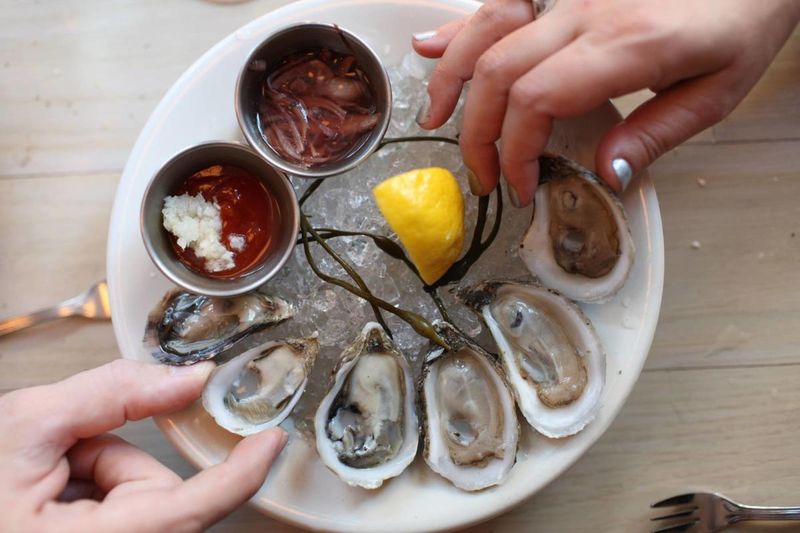
Oysters should sing with the briny taste of the sea, yet buffets often offer oysters that have been sitting around for who knows how long. I’ve witnessed oysters that lacked the delicate, refreshing quality you’d expect and instead carried a dubious aftertaste.
Buffet oysters, when not properly stored, can be breeding grounds for bacteria like norovirus. For a truly enjoyable oyster experience, it’s best to choose a restaurant known for its strict freshness standards.
6. Lobster Rolls At Fast Food Chains

Lobster rolls are meant to be a luxurious treat, but at some fast food chains, they end up as sad imitations—frozen, rubbery lobster drowned in too much mayo. I once bit into a lobster roll that tasted like it had been microwaved one too many times, and it was a letdown.
Real lobster deserves gentle preparation that highlights its natural sweetness and tender texture. For a truly indulgent lobster roll, look for a spot where fresh, steamed lobster is the star.
7. Microwaved Or Pre-Cooked Crab Legs
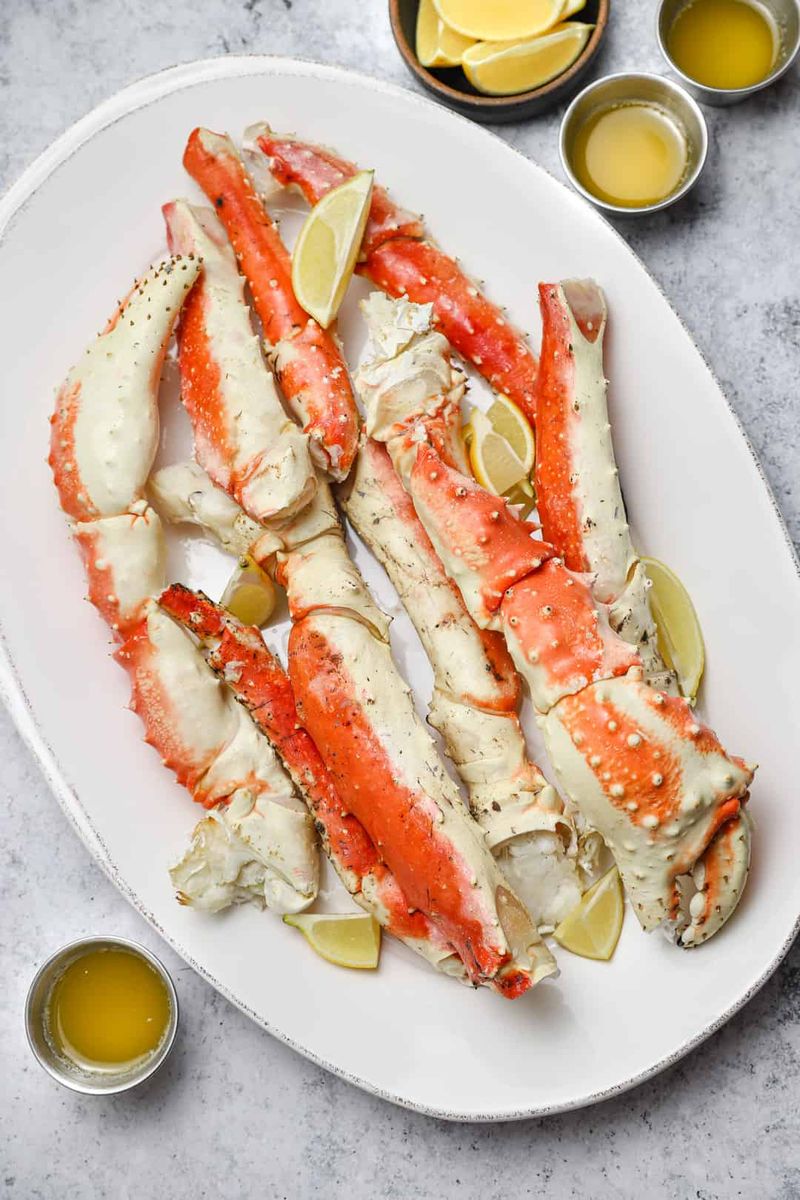
There’s something irreplaceable about fresh, steamed crab legs, but when they’re microwaved or pre-cooked, they often come out dry and stringy.
Crab legs require precise cooking to preserve their delicate flavor and moisture. Chefs avoid shortcuts here because the true taste of crab is a delicate balance that no microwave can capture.
8. Frozen Calamari Rings
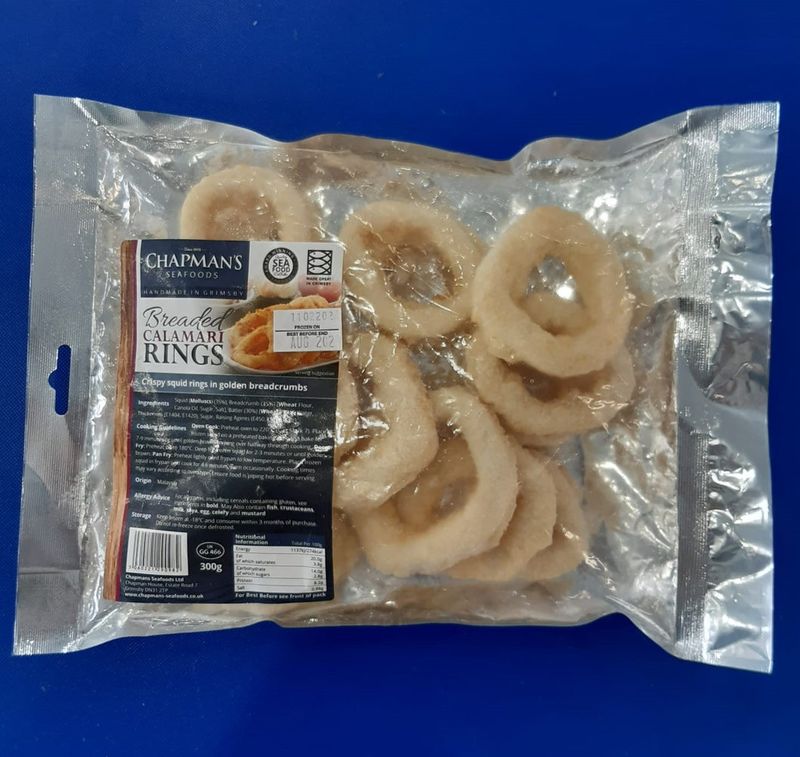
Frozen calamari rings might sound like a convenient option, but more often than not, they’re over-breaded, chewy, and missing that natural, tender squid texture.
When calamari is handled properly, it should be tender and lightly crispy. The frozen versions, sadly, tend to mask quality with excessive breading—something even professional kitchens avoid.
9. Seafood Boil From Questionable Vendors
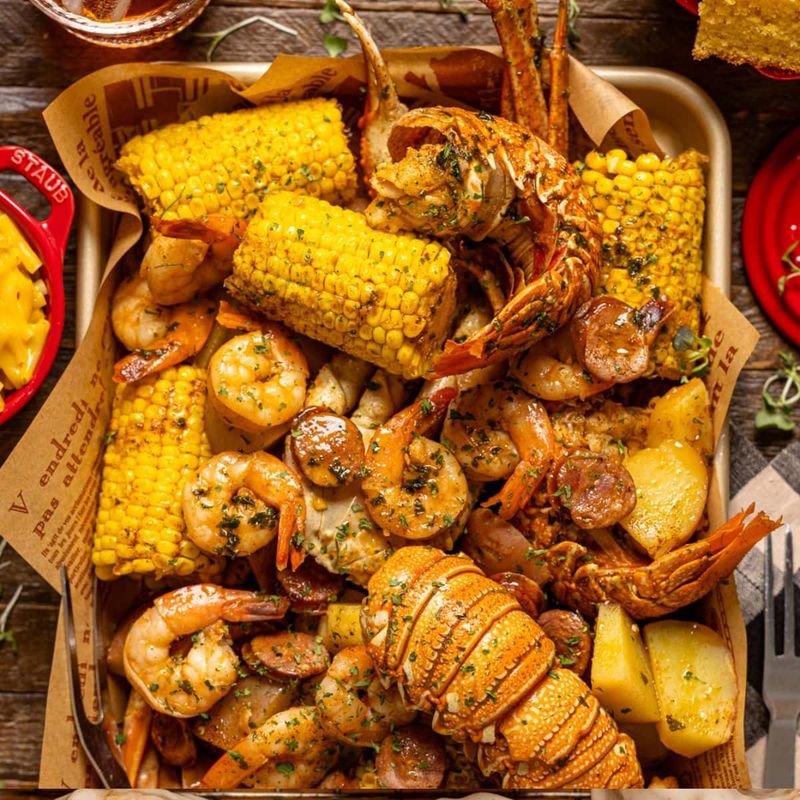
Seafood boils are meant to be a bountiful celebration of fresh, juicy seafood, but when the ingredients aren’t top-notch, no amount of spice can save the dish. I’ve had seafood boils that were more of a soggy stew than a festive feast.
The secret to a good seafood boil lies in impeccable quality and proper cooking; anything less results in a bland, overcooked medley. Always choose vendors known for their commitment to freshness if you want to truly enjoy this communal delight.
10. Shrimp Cocktail From A Buffet
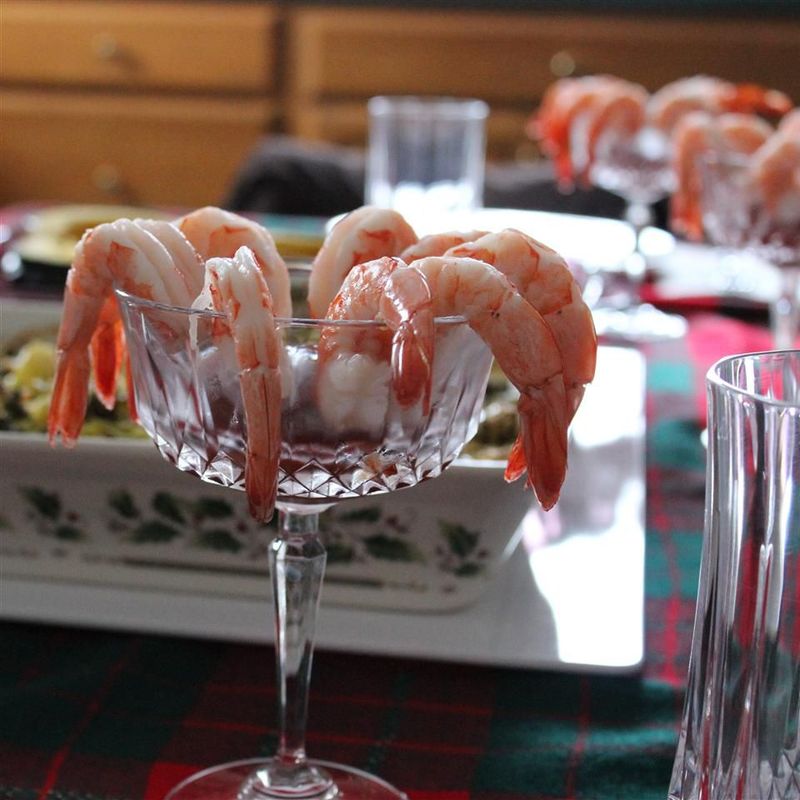
Pre-cooked shrimp that have been sitting out for too long can lose their sweetness and snap, becoming a potential health hazard.
Chefs caution that shrimp should be served immediately after preparation to maintain that crisp, ocean-fresh bite. When you’re presented with shrimp cocktail, look for signs of proper temperature and minimal time on the buffet line.
11. Chilean Sea Bass
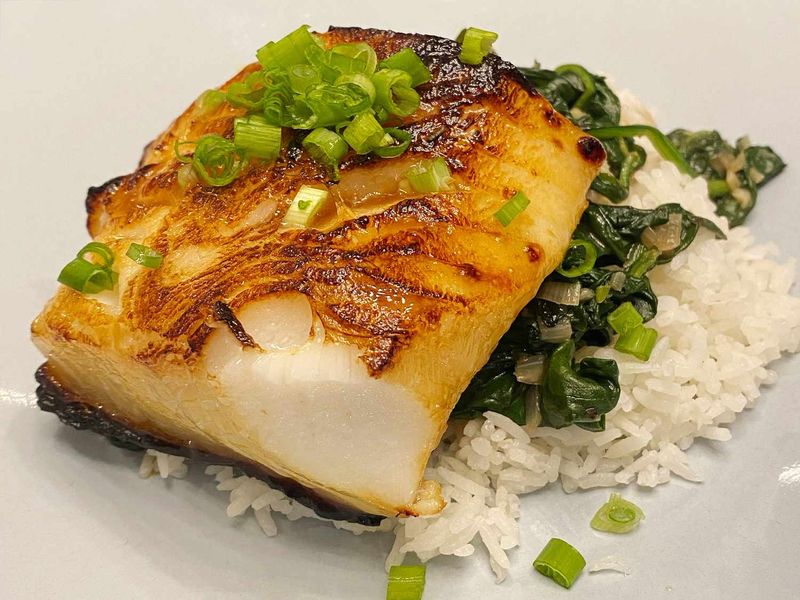
Though prized for its buttery, melt-in-your-mouth texture, Chilean Sea Bass has become a controversial choice due to overfishing and illegal practices. There are some eye-opening reports about its unsustainable catch methods, which makes it a dish many ethical chefs avoid.
Choosing sustainable seafood is crucial, and while Chilean Sea Bass is undeniably delicious, its environmental cost might not be worth that luxurious taste. Better alternatives exist that offer similar flavor profiles without harming marine populations.
12. Imported Farmed Shrimp
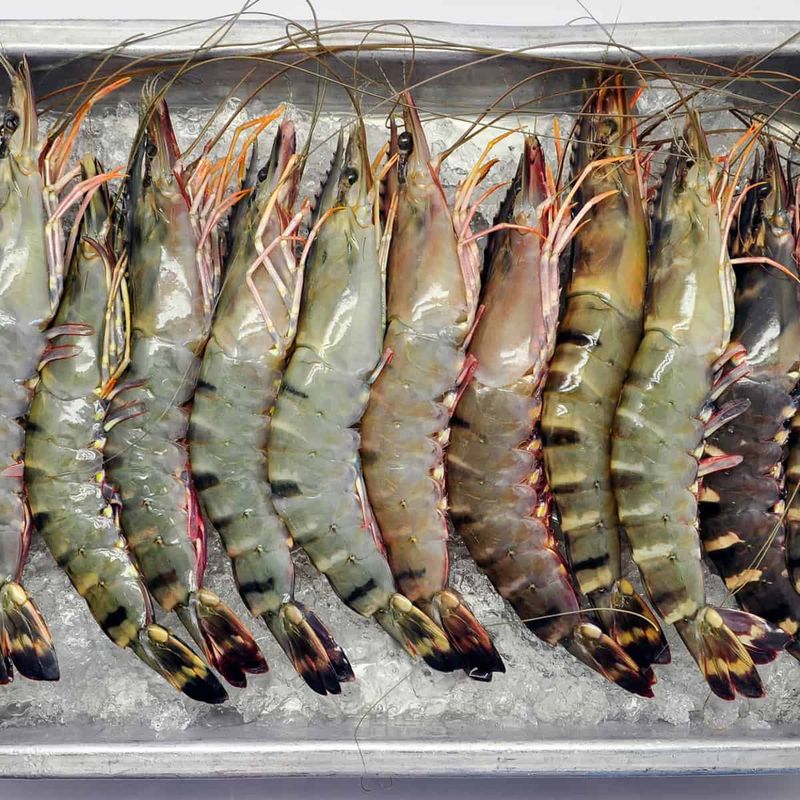
Imported farmed shrimp often come with a host of problems—from overcrowded conditions to antibiotic use.
It’s a classic case of convenience over quality. Whenever possible, opt for locally sourced, wild-caught shrimp to ensure you’re getting that pure, unadulterated flavor and texture that chefs know is essential.
13. Shark Fin Soup
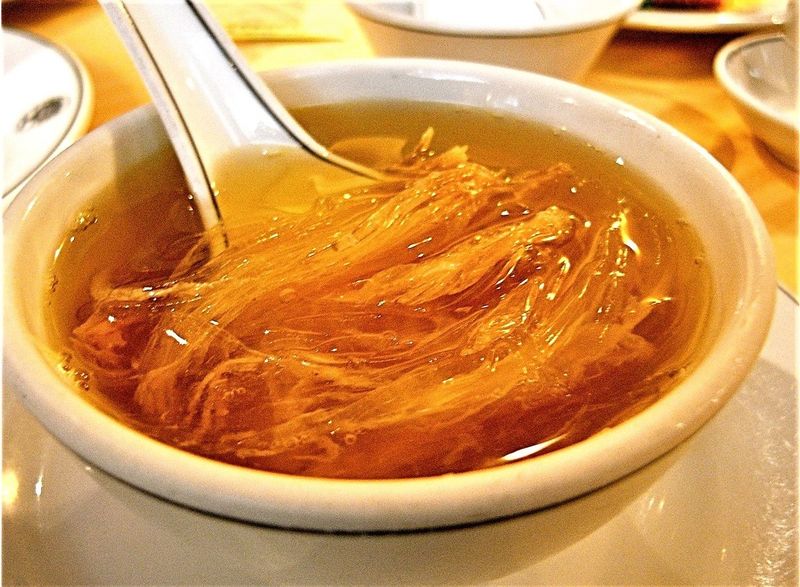
A dish steeped in controversy, Shark Fin Soup is notorious for its ethical baggage. The process of finning not only devastates shark populations but is also widely condemned for its cruelty.
The flavor might be rich and the broth complex, but the environmental and ethical costs make this soup one that many chefs refuse to serve. It’s a dish that demands you think twice about what luxury really means.
14. Orange Roughy

Orange Roughy might have a mild, delicate taste, but its slow growth and overfishing have left it teetering on the brink of collapse. I once sampled a dish featuring Orange Roughy and couldn’t shake the thought that I was eating something unsustainable.
When a fish’s environmental impact is this dire, even the most understated flavor can’t justify its presence on your plate. It’s better to choose more abundant, responsible alternatives that offer similar culinary pleasures without the ecological cost.
15. Eel (Unagi Or Anago)

Eel is celebrated in some circles for its rich, complex flavor, yet the realities of unsustainable farming and overfishing have tarnished its reputation. I’ve had eel dishes that were either too gamey or poorly executed, leaving me underwhelmed.
For me, quality eel should be tender and subtly sweet—something that requires expertise and careful sourcing. If you’re not in a high-end restaurant known for its precision, it might be wise to skip this risky indulgence.
16. Imitation Crab (Surimi)

Imitation crab, a blend of white fish, starch, and artificial flavoring, is often a cheap substitute that falls flat in texture and taste.
If you crave the genuine article, nothing compares to real crab meat. While imitation may be convenient, it’s a shadow of what proper, fresh crab can be—something that even seasoned chefs turn their noses up at.
17. Whole Fried Fish At Cheap Restaurants
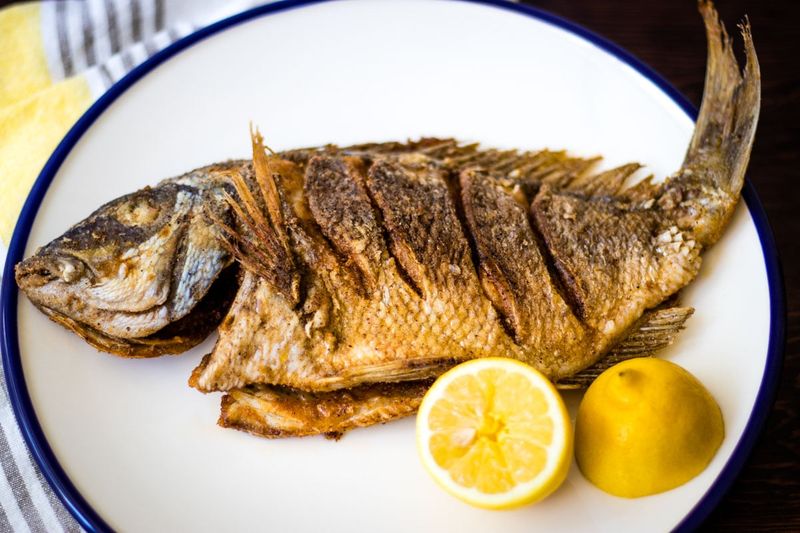
Ordering a whole fried fish from a budget spot can be a gamble. Often, these fish aren’t cleaned properly, resulting in a muddy, off-putting taste that ruins what should be a simple delight.
I learned the hard way that a fish that smells too “fishy” in a bad way is a sign of poor handling. Freshness is key, and a sloppy preparation turns a potential treat into a culinary regret.
18. Pre-Cooked Mussels & Clams
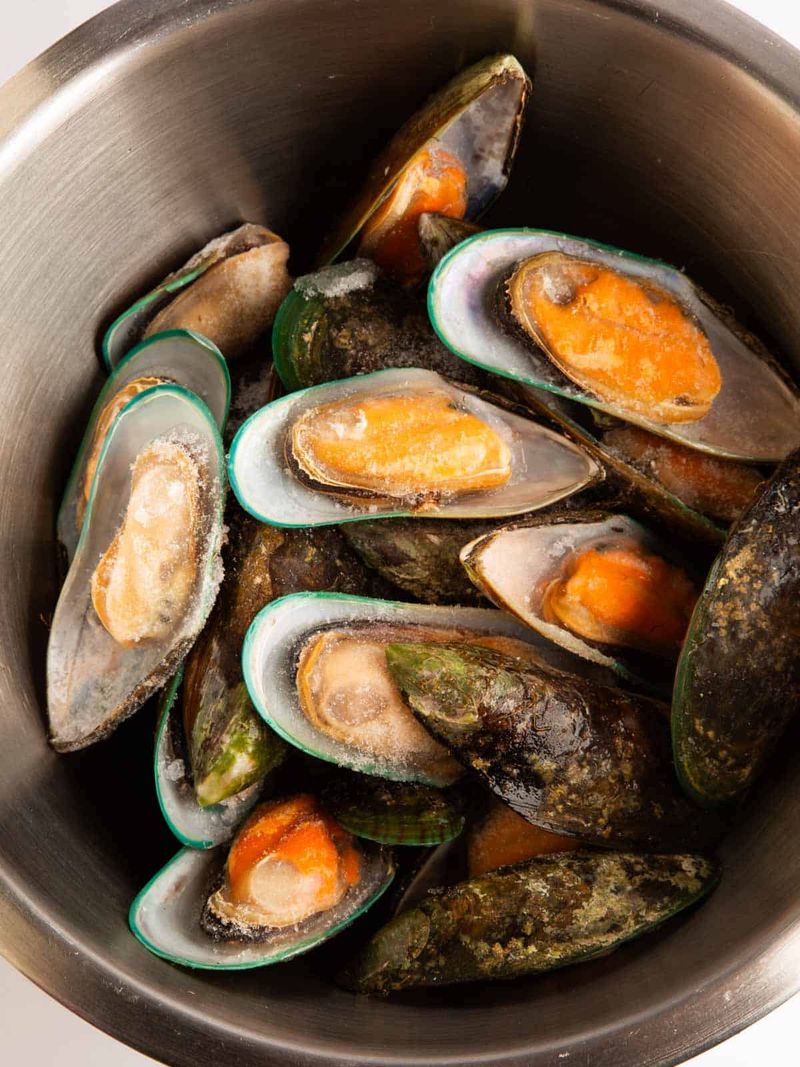
When mussels and clams are pre-cooked and then reheated, they tend to lose their natural brininess and become rubbery. I had encounters with pre-cooked shellfish that lacked that delicate, ocean-fresh tenderness, leaving me with an unappetizing texture.
The best mussels and clams are those that are served fresh and steamed just before hitting your table. If you have to settle for pre-cooked, make sure they’re not overdone—quality is paramount.
19. Canned Clams Or Oysters

Canned clams and oysters might offer convenience, but they rarely capture the delicate, nuanced flavors of fresh shellfish.
For an authentic seafood experience, always opt for freshly shucked options whenever possible. Canned goods can be a backup, but they simply can’t compete with the crisp, briny burst of fresh shellfish.
20. Undercooked Octopus
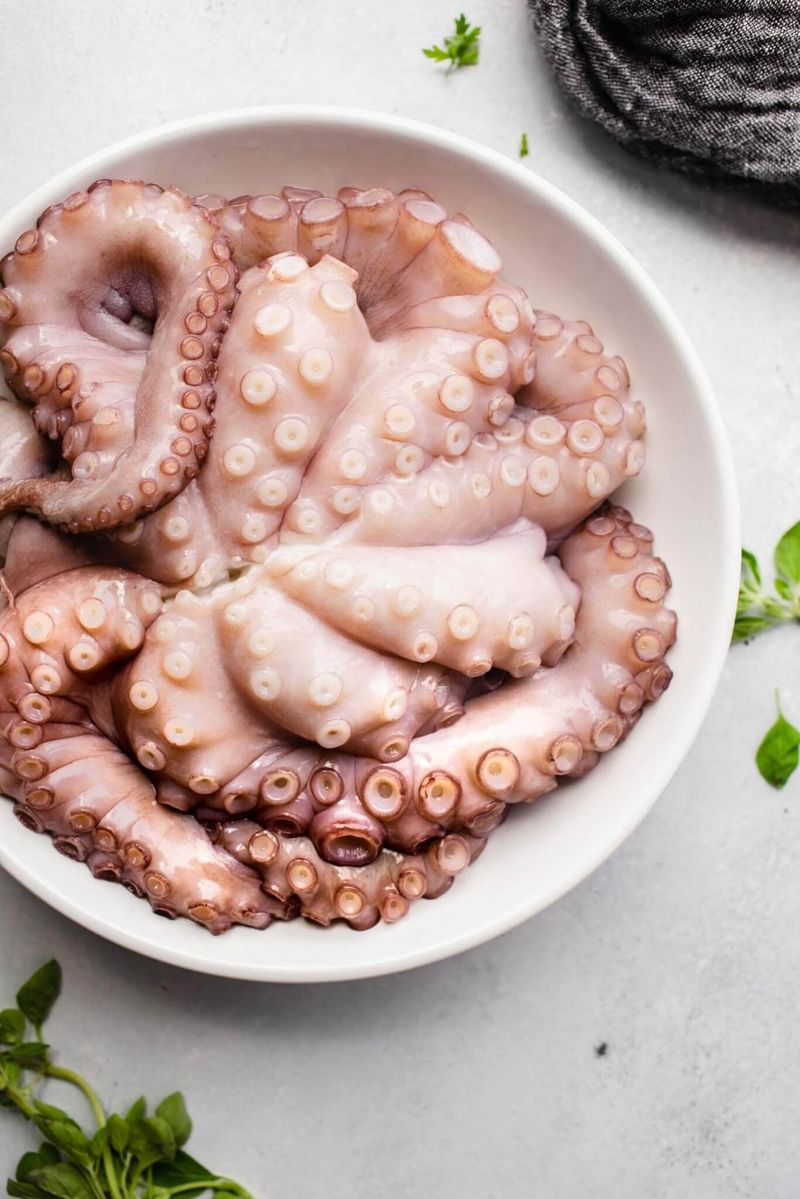
Octopus is an art form in the right hands, but if it’s undercooked, you end up with a rubbery, tough chew that’s nearly impossible to enjoy. Octopus dishes shouldn’t feel like chewing on a dense, sinewy puzzle rather than tender, succulent meat.
Properly cooked octopus should be tender and almost melt in your mouth, a texture achieved only with careful, slow cooking. If the octopus is underdone, it’s a culinary misfire that even adventurous eaters regret.
21. Fish Scraps In Sushi Rolls (Spicy Tuna, Etc.)
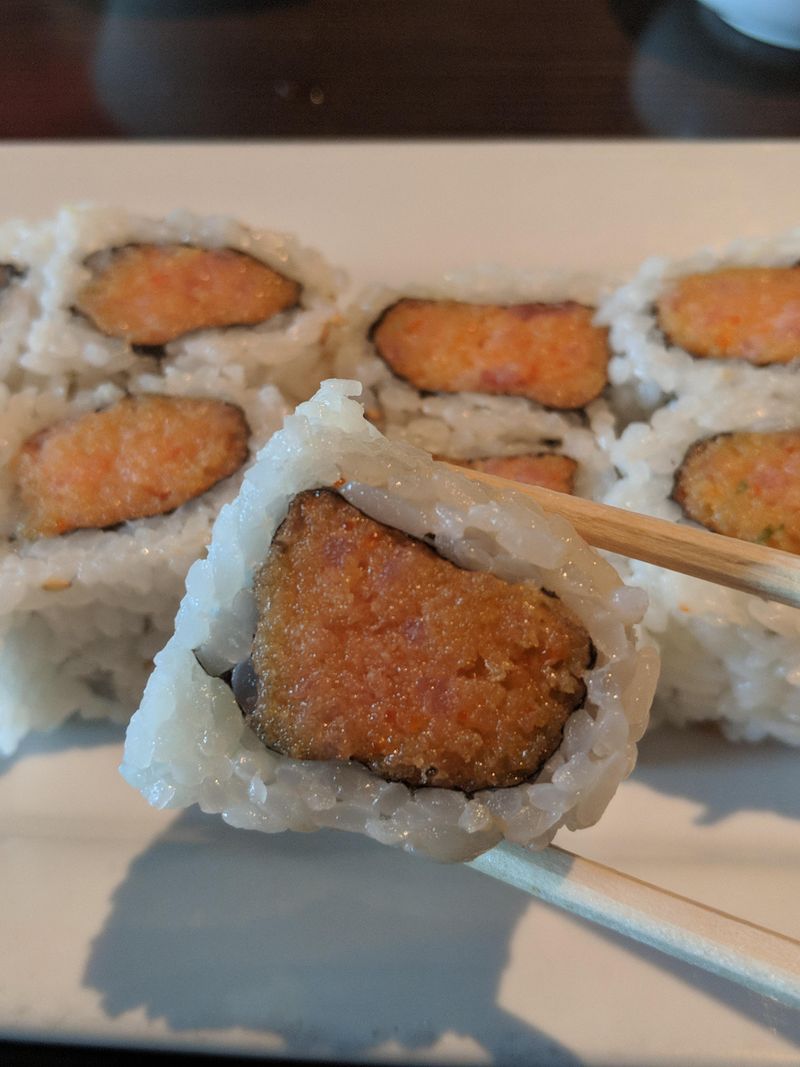
Some sushi rolls, especially budget-friendly ones, contain lower-quality fish scraps instead of prime cuts. I’ve bitten into a spicy tuna roll that seemed to be a hodgepodge of less-than-ideal fish bits rather than a well-curated seafood delight.
Top chefs insist that the quality of fish is paramount in sushi. If you’re after an authentic experience, insist on rolls made with premium, fresh cuts rather than a mix of scraps that compromise texture and flavor.
22. Fermented Or Rotten Fish Dishes (Like Surströmming)
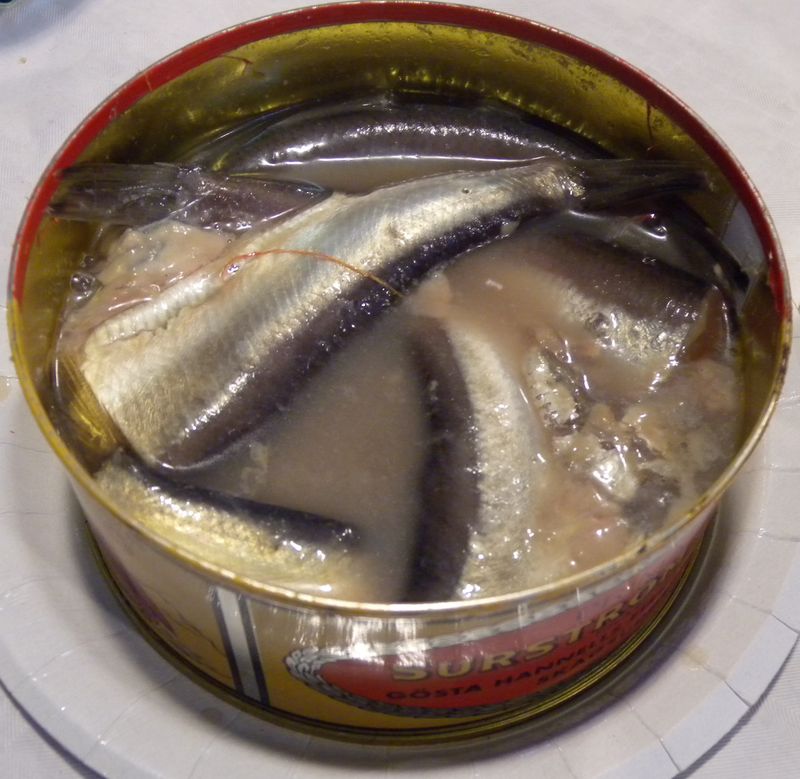
Surströmming, the infamous Swedish fermented herring, is notorious for its overpowering stench and acquired taste. Though it has a cult following, the overwhelming aroma can be off-putting to most.
I’ve heard tales of first-timers fleeing the table, and it’s no wonder—this dish is not for the faint-hearted. It serves as a stark reminder that some traditional foods, while historically significant, remain too extreme for mainstream dining.
23. Fugu (Pufferfish)
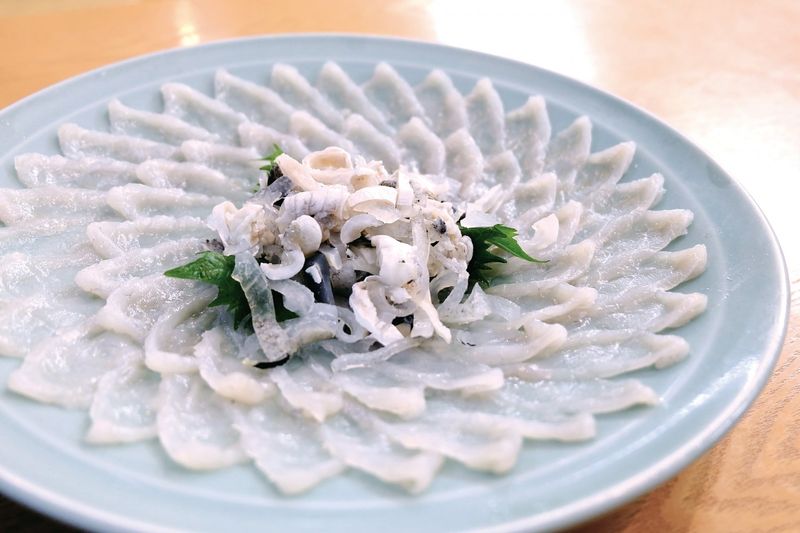
Fugu is the ultimate test of culinary precision; even a tiny mistake in its preparation can be lethal. Its delicate flavor is highly prized in Japan, yet the inherent danger means only the most rigorously trained chefs dare serve it.
I respect the mastery required to prepare fugu, but for the average diner, the risk is simply too high. When it comes to pufferfish, safety should always come first—this isn’t a dish to gamble with.
24. Sea Urchin (Uni) From Low-End Restaurants
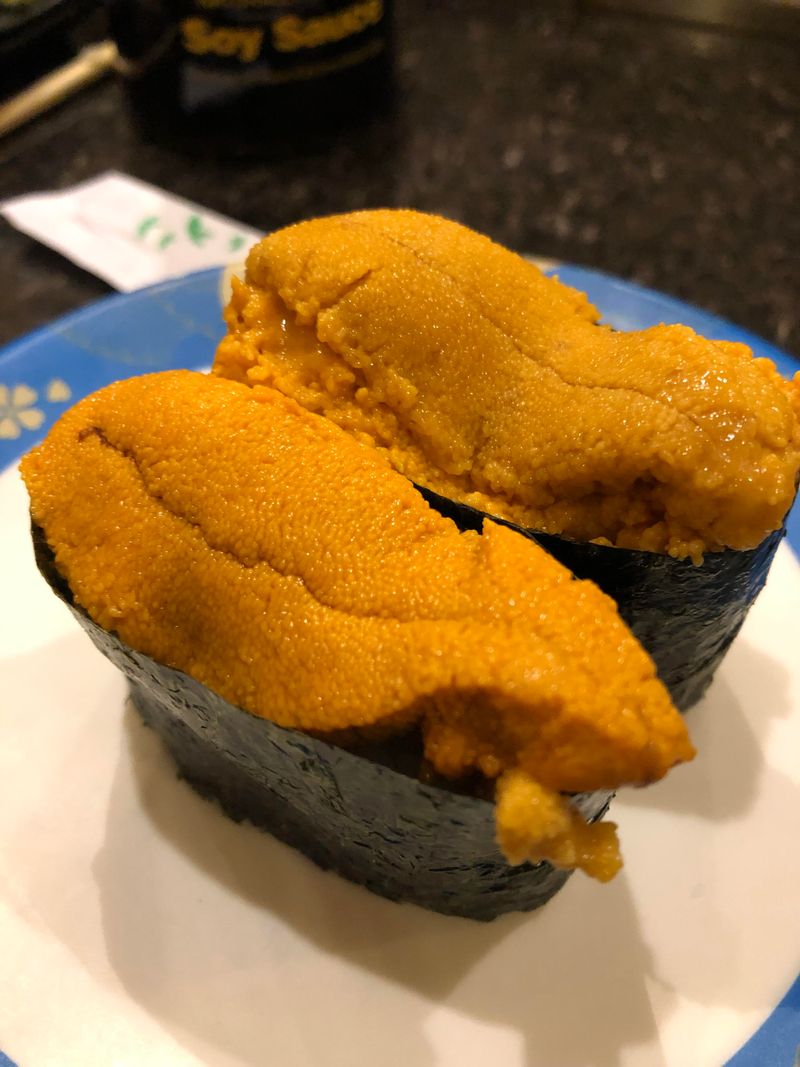
Uni should be a creamy, luxurious treat, but when sourced from low-end establishments, it often turns into a pungent, overwhelming mess.
For an ideal uni experience, quality and freshness are non-negotiable. If the uni is off, you’re left with nothing but a strong, unappealing ocean funk that even the most dedicated sushi lovers would avoid.
25. All-You-Can-Eat Seafood Deals
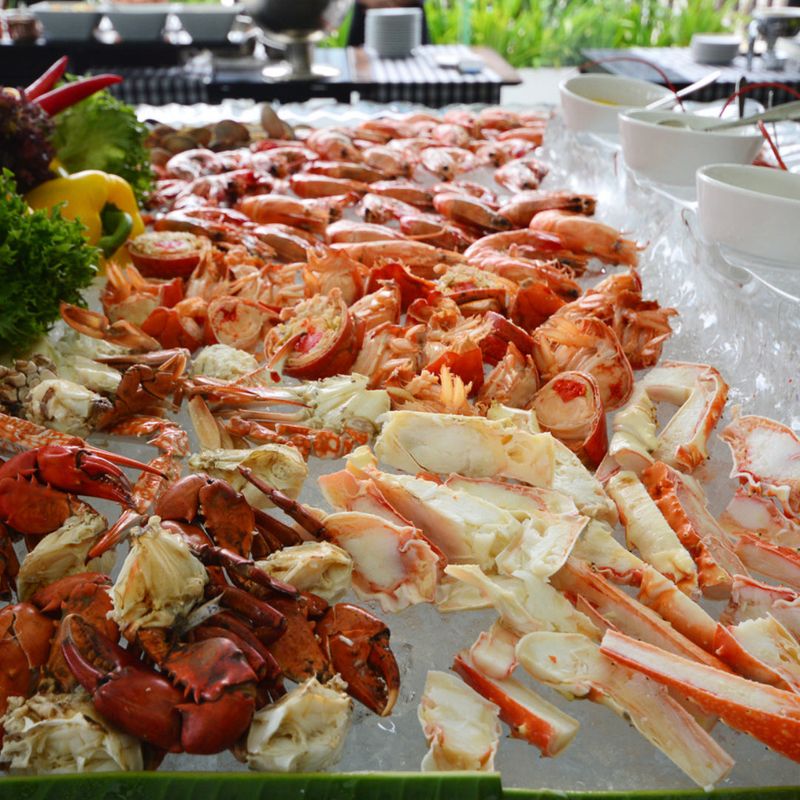
The lure of unlimited seafood might be tempting, but these deals are notorious for sacrificing quality and freshness for volume. I’ve seen endless plates of overcooked, flavorless seafood that left me longing for a real, carefully prepared dish.
In the world of seafood, quality matters more than quantity. Chefs know that true indulgence comes from meticulously sourced and prepared ingredients, not an endless buffet of mediocrity.

